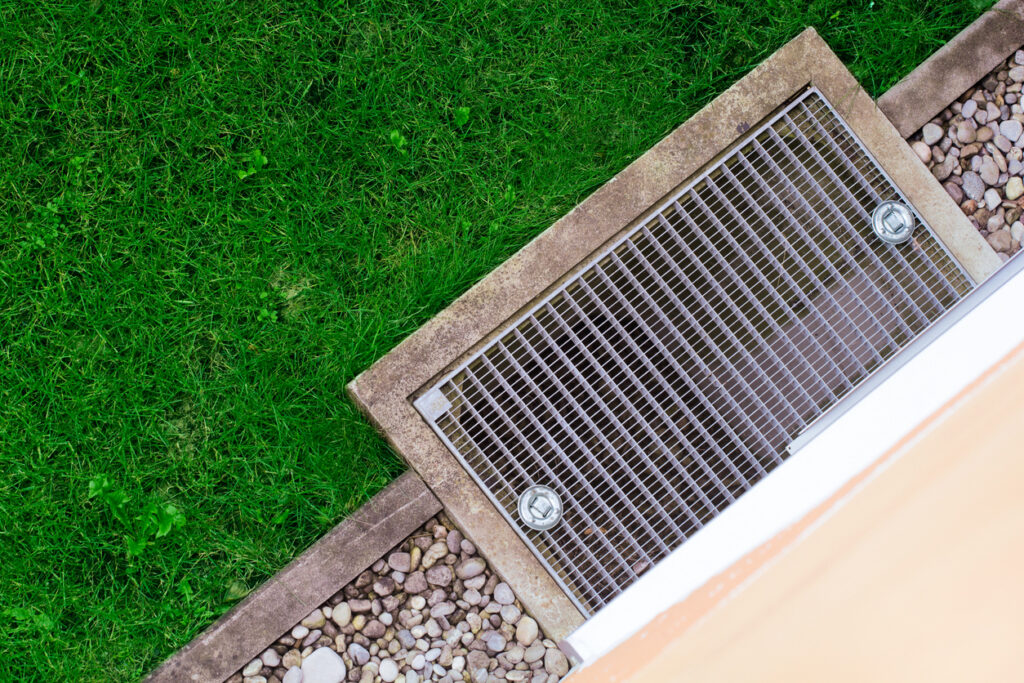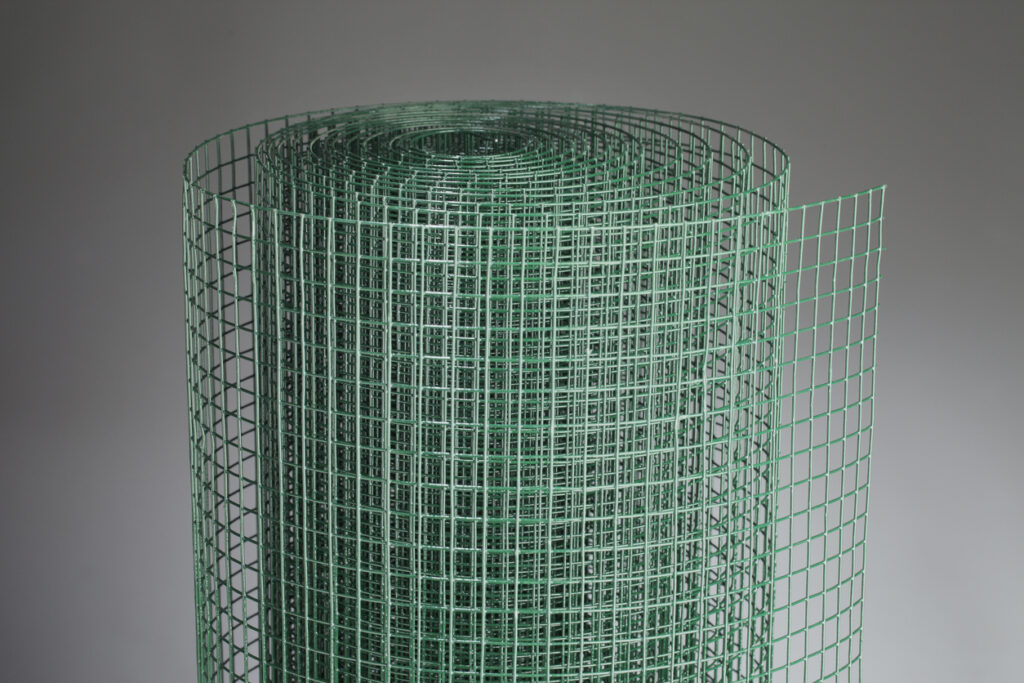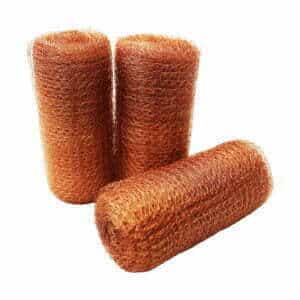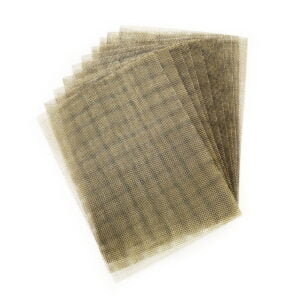









Rodents, notorious for causing damage and health risks, are a universal problem in both rural and urban settings.
The key to effective rodent control lies in initial prevention. This is an area that we at The Mesh Company specialise in.
In this regard, one of the most reliable solutions is the use of 304 grade stainless steel wire mesh. This article explores how a 2mm square hole woven wire mesh, made from this durable material, is an essential tool in creating a rodent-free environment.
Let’s get into it…
Prior to delving into the uses of stainless steel mesh, it is important to understand what makes 304 grade stainless steel mesh such a highly effective material. This type of stainless steel is known for its excellent corrosion resistance, which makes it an ideal material for long-term use in a wide range of environments. This 2mm square hole size is specifically designed to prevent the entry of small rodents, by creating a physical barrier that is both impenetrable and very durable to prevent the entry of small rodents through the hole.
The 2mm hole specifically gives a very decent open area %, which allows for good airflow.

Prior to delving into the uses of stainless steel mesh, it is important to understand what makes 304 grade stainless steel mesh such a highly effective material. This type of stainless steel is known for its excellent corrosion resistance, which makes it an ideal material for long-term use in a wide range of environments.
This 2mm square hole size is specifically designed to prevent the entry of small rodents, by creating a physical barrier that is both impenetrable and very durable to prevent the entry of small rodents through the hole.
The challenge of sealing gaps and vents in buildings to prevent rodent entry is a significant one. Mice and rats, in particular, can squeeze through extremely small spaces – some as small as a quarter inch. Because of this ability, even the smallest gaps around pipes, vents, and under doors can become gateways for these pests.
In these scenarios, stainless steel mesh 304 grade is a game-changer. With its 2mm square holes, this mesh prevents rodents from passing through while still allowing for necessary airflow. This feature is critical in maintaining building ventilation, particularly in areas like kitchens, bathrooms, and other spaces where moisture and air circulation are vital.
Stainless steel mesh should be fitted over gaps and vents with several considerations in mind.
Firstly, the size of the mesh needs to be tailored to cover the entire opening, with additional overlap to ensure a secure fit. To provide additional support and ensure a tight seal, a frame may be necessary. Maintaining the integrity of the mesh over time is also possible by using weatherproof and rust-resistant fasteners, such as stainless steel screws.
Furthermore, aesthetics play a crucial role. Stainless steel mesh can be discreetly installed, blending with the building’s exterior or interior. In commercial settings, where appearances can affect customer perception, this subtlety is especially vital.

The cellar (basement), loft (attic), and garage are often hotspots for rodent activity. Rodents seek shelter in these areas because they are usually less frequented by humans and offer many hiding places. Understanding rodent behavior and fortifying entry points are key to securing these spaces.
Stainless steel mesh is particularly suitable for reinforcing these vulnerable areas due to its durability and resistance to environmental factors. Often, softer materials are damaged by rodents chewing and gnawing. Even the most determined rodents are deterred by the high-strength 304 grade stainless steel mesh.
Mesh can be applied around window wells, egress windows, and along the foundation where utilities enter the home. Covering vents, eaves gaps, and roofing intersections is crucial in lofts. Garages, often the first entry point for rodents into a home, require mesh installation around door frames, ventilation grills, and any other openings.
It’s not only about blocking entry points but also about monitoring and maintenance. It is important to inspect for signs of rodent activity or potential entry points on a regular basis. Maintaining the integrity of the rodent-proof barrier is ensured by this proactive approach.
Garden and outdoor settings prove stainless steel mesh’ versatility beyond buildings. Often a source of food and shelter for rodents, gardens can suffer from their presence. It is both effective and non-disruptive to the environment to use mesh.
Compost bins can be protected using this innovative technology. Organic matter in compost can attract rodents. In addition to keeping rodents out, stainless steel mesh encloses compost bins to facilitate air circulation.
Similarly, mesh can be used as a bottom layer in garden beds to prevent burrowing rodents from accessing roots. In raised beds, where the mesh can be laid down before the soil is added, this method is particularly effective.
The stainless steel mesh acts as a shield for small structures such as sheds, greenhouses, and chicken coops, keeping any openings secure while maintaining ventilation. It is essential not only for rodent control, but also for maintaining the health of plants and animals within these structures.
Installing stainless steel mesh for rodent control is relatively straightforward, but there are some key tips to ensure effectiveness:
Measure Accurately: Before cutting the mesh, measure the area you need to cover carefully. Remember, it’s better to have a slightly larger piece than one that is too small.
Secure Firmly: Use appropriate fasteners to secure the mesh in place. This could be screws, nails, or wire ties, depending on where it’s being installed.
Inspect Regularly: Periodic checks are essential to ensure the mesh remains intact and hasn’t been compromised.
Stainless steel mesh offers several advantages over traditional rodent control methods:
The Mesh Company offers a wide range of rodent mesh materials, featuring different metals, hole sizes, and roll dimensions, catering to various requirements. The main options available include:
Copper Rodent Mesh: Copper’s natural resistance to corrosion and malleability make it a versatile choice for a variety of applications. Since copper has a distinctive appearance, it’s ideal for environments where aesthetics are important.

Galvanised Rodent Mesh: Using zinc-coated steel mesh provides excellent protection against corrosion and rust. The durability and cost-effectiveness of galvanised mesh make it an ideal choice for outdoor applications and larger areas.

Stainless Rodent Mesh: A premium choice for long-term applications, this stainless steel mesh is highly resistant to corrosion and wear. For both indoor and outdoor rodent control, the 304 grade stainless steel variant is highly effective due to its robustness and resistance to environmental factors.

304 grade stainless steel wire mesh is highly effective, durable, and humane against rodent infestations.
Its versatility in application, ease of installation, and long-term benefits make this product ideal for creating a rodent-free environment.
By incorporating this mesh into your pest control strategy, you can protect your property effectively and sustainably.
As always, thank you for checking out our blog. We hope that this helps you with your project. We try to launch a couple of new guides every week. Eventually we will have covered everything there is to cover about mesh.
You may be interested in our blog that explores how to build a chicken coop.
Our goal for our blogs and help guides is to answer as many questions as possible to help to explain the possibilities of mesh to our customers.















The largest range of wire mesh, chicken wire, wire fencing, woven wire mesh and perforated metal products in Europe, delivered direct from our Warrington warehouse.




Website by: Beech Web Services | Terms and Conditions | Cookie Policy | Privacy Policy | Website Terms and Conditions